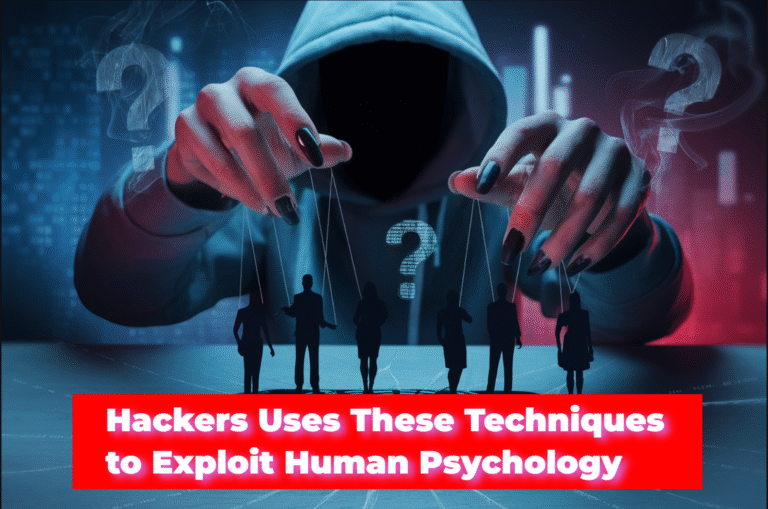Read Also: 7 Best Ways To Improve Your Security Strategy
Before we discuss the key prevention measures, let’s have a quick overview of cyberattacks.
Table of Contents
Introduction to Cyber-Attacks
A cyberattack is any malicious activity or attack that targets computer networks, systems, and programs. Cybercriminals often use various methods to gain access to information and disrupt operations. These methods include malware, phishing attacks, ransomware, hacker attacks, and denial-of-service attacks. Cyberattacks can result in disruption of service, data loss, and financial losses.
There are several types of cyberattacks, each of which can have different impacts and pose different levels of risk. The following are a few standard types of cyberattacks in today’s world:
- Malware is malicious software to steal data or gain access to a system.
- Phishing is an attempt to acquire sensitive data such as usernames, passwords, or credit card information by disguising it as a legitimate source.
- Ransomware is another malicious software used to extort money by encrypting a user’s files and demanding payment to unlock them.
- Denial-of-service attacks involve flooding a system with requests to overload it, making it unavailable to users.
Understanding the types of cyberattacks and how to protect yourself from them is essential. Consequently, gaining familiarity with cyber security and its techniques is as significant as ever. To learn cyber security and master it, the best possible way is to pursue a PG in cyber security from a reputable institution. Through the PG program, you will gain the technical knowledge, problem-solving skills, and critical thinking abilities required to work in the cybersecurity field. In addition, you will have the opportunity to interact with experts and industry professionals, get practical experience, and become part of a network of professionals.
Cybersecurity is the practice of protecting systems, programs, and networks from digital attacks. It’s a process that involves a variety of security measures and strategies designed to prevent unauthorized access, disruption, or destruction of data, which can include anything from firewalls and encryption to user authentication and access control. Cybersecurity is essential for organizations and individuals alike; it helps protect their digital assets and safeguard against malicious attacks.
Without further ado, let’s discuss the 5 key prevention measures for cyber-attacks.
5 Key Measures to Prevent Cyber-Attacks
In the digital age, cyberattacks have become an unavoidable fact of life for businesses of all sizes. As a result, companies need to implement measures that can help reduce the risk of cyberattacks and protect sensitive data.
Read Also: 5 Reliable Strategies to Enhance IT Security and Protect Your Business
Here are 5 key prevention measures companies can use to minimize the chance of a cyberattack:
1. Use Strong Passwords and Multi-Factor Authentication
The foremost measure is to ensure that all passwords are secure, unique, and regularly changed. Passwords should be complex and include a mix of upper- and lower-case characters, numbers, and special characters. A strong password is critical because it makes it much more difficult for cyber attackers to guess or crack it.
Additionally, two-factor authentication (2FA) or multi-factor authentication should be considered, as it further secures a user’s account and data. It can help protect confidential data and corporate networks by requiring more than one piece of evidence, such as a password, fingerprint, or facial recognition, to access an account. For example, you might use a username/password combination along with a one-time passcode sent via text message or a biometric factor like a fingerprint. Using two or more factors makes it much more tricky for an attacker to obtain access to your account, dramatically reducing the risk of a successful cyberattack.
2. Update Software and Systems
The second measure is to stay up-to-date with software updates. It is vital to keep all software and operating systems updated with the most current versions, as this ensures that any security issues that have been identified and rectified can be patched and updated.
Install the latest security patches and consider using a vulnerability scanner to identify and fix any weaknesses in your system. Also, make sure to back up your data so that if an attack occurs, you can restore your system quickly.
3. Install Antivirus Software
Antivirus software helps to protect your computer from malicious malware, viruses, Trojans, and other potential threats. It scans your computer for known threats and alerts you if it detects any suspicious files or activity. With antivirus software installed, you can detect and stop a possible attack before any damage is done.
4. Limit User Access
The third measure is to limit user access. Limiting user access to sensitive areas of the network can help prevent unauthorized access to confidential data. Companies should only give users access to the systems and data that are necessary for their jobs, and all other data should be kept secure and out of reach. Additionally, users should be regularly monitored to ensure that their access is up-to-date and is not being abused.
5. Provide Security Awareness Training
Security awareness training can help employees understand the risks of cyberattacks and how to recognize potential threats. It educates employees on the different types of cyberattacks and how to detect and respond to them. Employees should be aware of common attack vectors, such as phishing emails, ransomware, and malware.
In addition, security awareness training can also help organizations create a culture of security within the workplace. Organizations can promote a culture of safety and security by educating employees on security best practices and empowering them to take action when they see suspicious activity.
Investing in security awareness training is an integral part of a comprehensive cybersecurity strategy. There are a plethora of online cybersecurity courses available today that are offered by top-notch companies. They can help provide security awareness to employees and help prevent cyberattacks by giving employees the knowledge and understanding of recognizing and responding to potential cyber threats. They offer employees the flexibility and cost-effectiveness of learning at any time, day or night, and from any location while providing hands-on instruction and practice. Such courses can help organizations create a culture of cybersecurity and protect themselves from costly cyberattacks.
Wrapping Up
Cyberattacks are a significant and growing threat. By implementing these 5 key prevention measures, businesses can significantly reduce the risk of cyberattacks, helping to keep their data and networks safe. Ensure that you set up secure firewalls and other security measures, keep all software and systems up to date, create secure passwords, train and educate employees on cyber security, and regularly audit systems and networks. You can ensure that your data and systems are secure by being proactive and taking the necessary steps to protect your business from cybercrime.
Read Next: 10 Essential Online Safety Steps You Can’t Afford to Ignore









